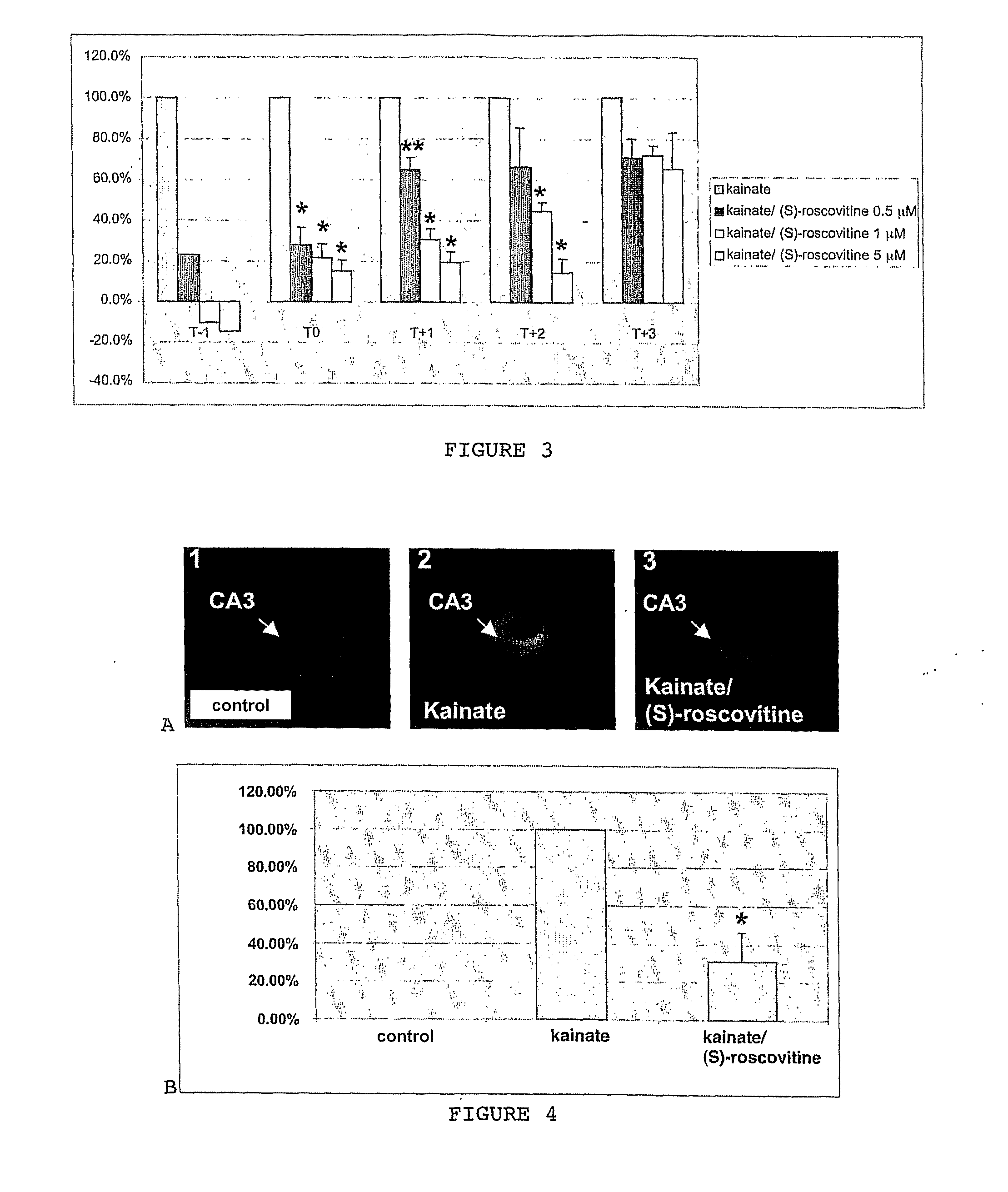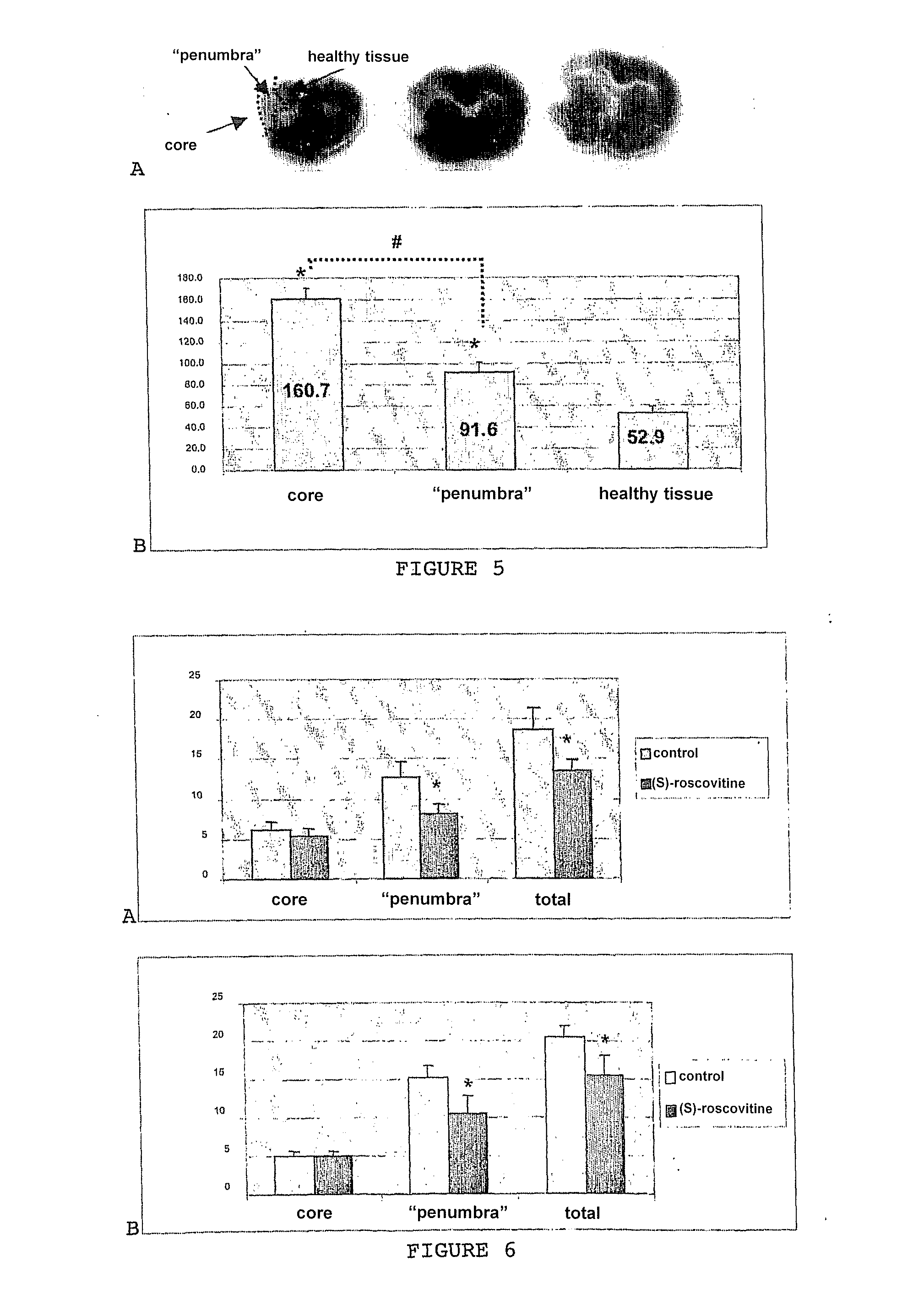Use of (S)-Roscovitine for Prevention and/or Treatment of Neurological Diseases
a technology of roscovitine and neurodegenerative diseases, applied in the field of neurodegenerative diseases, can solve the problems of insufficient efficacy, side effects, certain toxicity, etc., and achieve the effect of reducing the risk of cerebral haemorrhage and preventing or reducing cerebral ischemia
- Summary
- Abstract
- Description
- Claims
- Application Information
AI Technical Summary
Benefits of technology
Problems solved by technology
Method used
Image
Examples
examples
I. Study of the Neuroprotective Effect of (S)-Roscovitine on Neuronal Death
I.1. Study Of The Nuroprotective Effect Of (S)-Roscovitine In An In Vitro Excitotoxicity Model: A Mixed Neural Culture Of Hippocampus Cells
[0055]This model corresponds to a mixed culture of neuronal and glial cells taken from the hippocampus of rats aged 18 embryonic days (E18) and exposed to kainate (KA), a glutamate analogue. This mixed culture system was preferred to an exclusive culture system of neurones in order to better reflect the in vivo cell environment. Under these culture conditions, the astrocytes and oligodendrocytes were not affected by the kainate treatment. FIG. 8 illustrates the neurone death that was thus observed in a complex strictly neuronal excitotoxicity cell model.
[0056]Kainate, a glutamatergic agonist, was chosen in vitro as an excitotoxic agent in the present experiments. This choice was based amongst other things on in vivo studies that showed that kainate induces a programmed cel...
PUM
| Property | Measurement | Unit |
|---|---|---|
| Mass | aaaaa | aaaaa |
| Mass | aaaaa | aaaaa |
| Mass | aaaaa | aaaaa |
Abstract
Description
Claims
Application Information
 Login to View More
Login to View More - R&D
- Intellectual Property
- Life Sciences
- Materials
- Tech Scout
- Unparalleled Data Quality
- Higher Quality Content
- 60% Fewer Hallucinations
Browse by: Latest US Patents, China's latest patents, Technical Efficacy Thesaurus, Application Domain, Technology Topic, Popular Technical Reports.
© 2025 PatSnap. All rights reserved.Legal|Privacy policy|Modern Slavery Act Transparency Statement|Sitemap|About US| Contact US: help@patsnap.com



